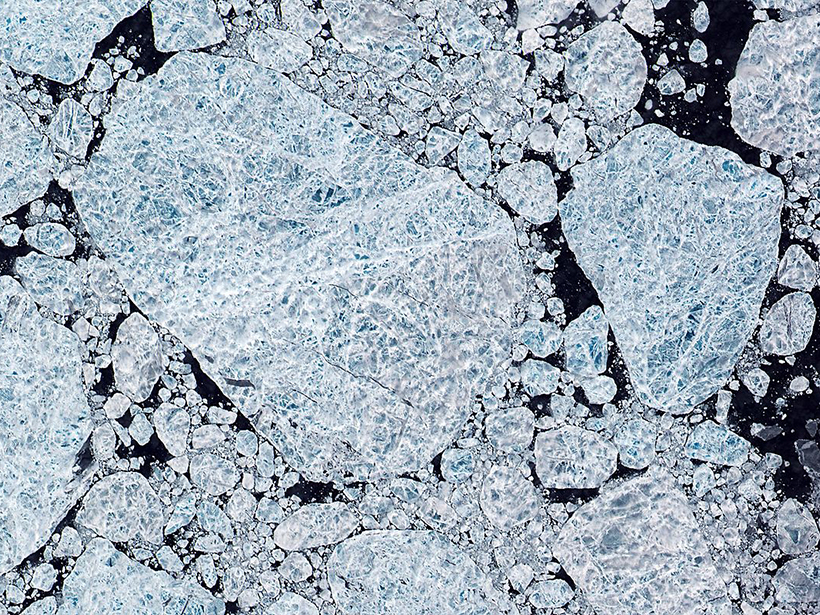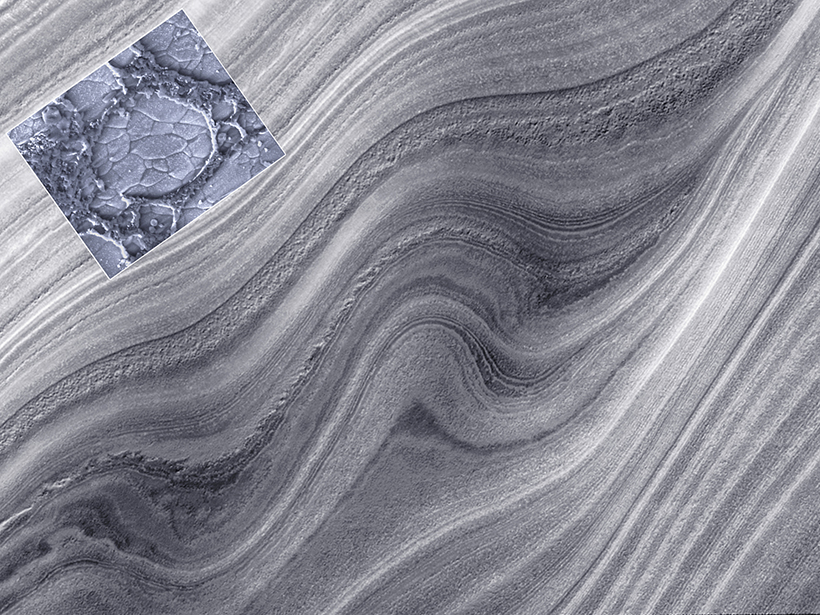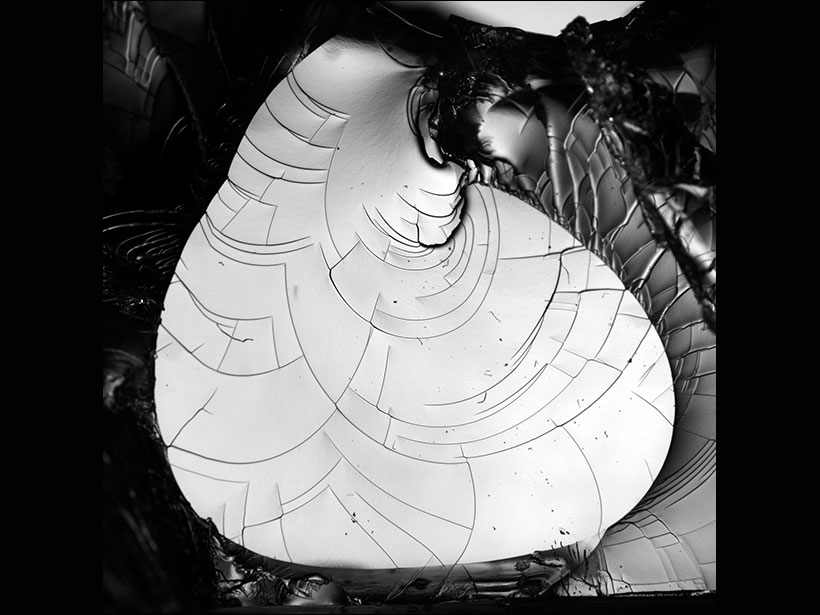A new study ties layers in the polar deposits of Mars to changes in climate driven by orbital variations, constraining accumulation rates and further deciphering the climate history of the Red Planet.
ice
Ammonia Ice Deposits on Pluto Hint at Recent Cryovolcanism
This discovery is the latest in a growing stack of evidence pointing to the presence of an ammonia-rich water ocean beneath Pluto’s icy crust.
Strong Winds Leave Arctic Regions on Thin Ice
A warming event in Siberia caused winds to strip sea ice from the Arctic’s Wandel Sea.
How Do Intergranular Particles Affect the Flow of Ice?
Laboratory experiments that indicate rock particles can impede sliding along grain boundaries in ice may help researchers more accurately determine the composition of planetary ice masses.
How Long Can Celestial Bodies Retain Ice?
A new model suggests that many objects in the outer asteroid belt may still harbor deposits that formed around the time of their accretion.
Watch Tiny Cracks Travel in 3-D
Scientists used a transparent gel and high-speed photography to figure out how cracks form and spread. What they found could help explain earthquakes and fracturing glaciers.
Meet IceWorm: NASA’s New Ice-Climbing Robot
A robot that can inch up icy surfaces may help scientists reach new heights in some of Earth’s most dangerous and remote landscapes.
Brucker Receives 2018 Cryosphere Early Career Award
Ludovic Brucker will receive the 2018 Cryosphere Early Career Award at AGU’s Fall Meeting 2018, to be held 10–14 December in Washington, D. C. The award is for “significant early career contributions to cryospheric science and technology.”
How Nitrogen Contributes to Permafrost Carbon Dynamics
Nitrogen released into the soil from thawing permafrost in the Arctic could accelerate soil carbon decomposition and alter carbon dynamics, with global implications.
Huge Blades of Ice May Partially Cover Jupiter’s Moon Europa
Conditions are right for “penitentes” up to 15 meters high to form on the Jovian moon, new research shows. The spires might prevent a lander from exploring Europa’s equatorial region.









